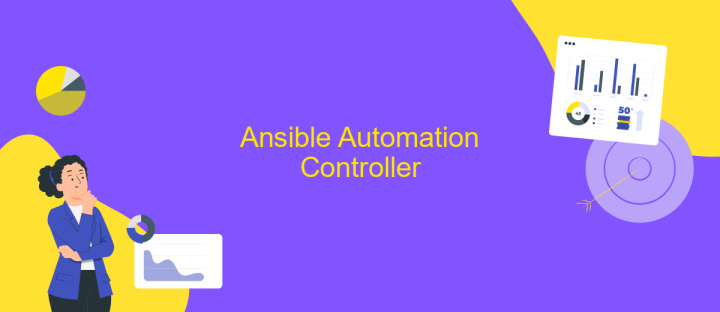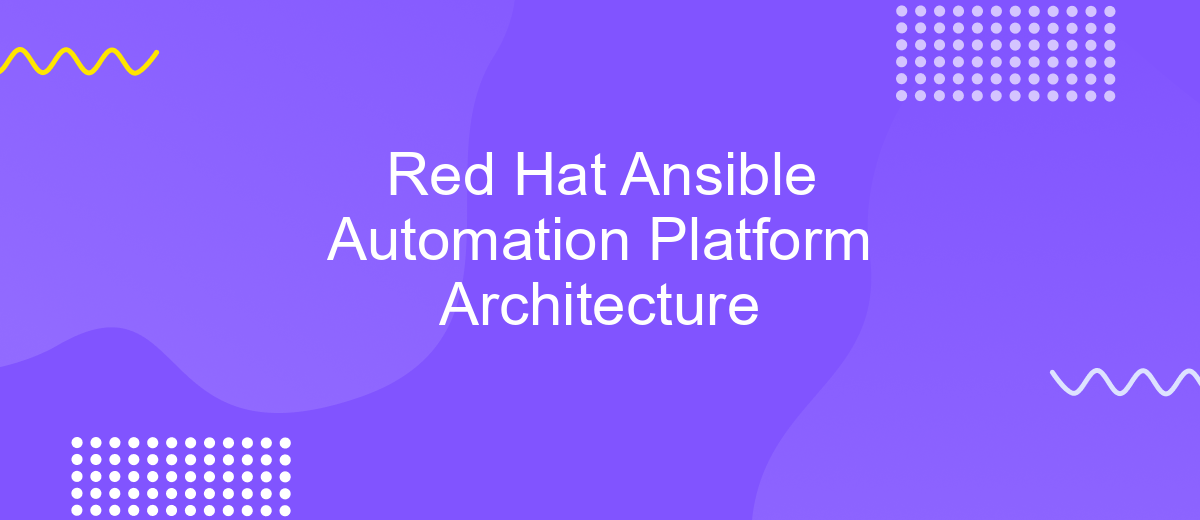Red Hat Ansible Automation Platform Architecture
The Red Hat Ansible Automation Platform Architecture provides a robust framework for automating IT processes across diverse environments. By leveraging Ansible's powerful automation capabilities, organizations can streamline operations, enhance scalability, and improve consistency. This platform offers a comprehensive suite of tools designed to manage complex infrastructures efficiently, enabling seamless integration and collaboration across teams. Explore how this architecture empowers businesses to innovate and adapt in today's dynamic technological landscape.
Introduction
The Red Hat Ansible Automation Platform is a comprehensive suite designed to streamline IT automation across diverse environments. As organizations increasingly adopt automation to enhance efficiency and consistency, understanding the architecture of Ansible becomes crucial. This platform offers a robust framework that supports a wide range of use cases, from simple task automation to complex orchestration across hybrid clouds.
- Centralized Automation Control: Manage and monitor automation tasks from a single interface.
- Scalability: Adapt to growing demands with a distributed architecture that supports large-scale deployments.
- Integration Capabilities: Seamlessly connect with existing IT infrastructure and third-party tools.
- Security and Compliance: Ensure secure automation practices with role-based access control and audit trails.
By leveraging the Red Hat Ansible Automation Platform, organizations can achieve greater agility and reduce operational overhead. Its flexible architecture allows IT teams to design tailored automation solutions that align with specific business needs. Whether it's provisioning resources, configuring systems, or managing application deployments, Ansible provides a reliable and efficient approach to automation, empowering teams to focus on innovation and strategic initiatives.
Ansible Content Collections

Ansible Content Collections are a pivotal part of the Red Hat Ansible Automation Platform, serving as a modular and organized method to package and distribute Ansible content. These collections include playbooks, roles, modules, and plugins, all bundled together to facilitate efficient automation tasks. By structuring content in this way, users can easily share and reuse automation scripts, ensuring consistency and reducing duplication of effort across different environments.
Furthermore, Ansible Content Collections enable seamless integration with various services and platforms. For instance, integrating with tools like ApiX-Drive can enhance automation capabilities by allowing users to connect and automate workflows across multiple applications without complex coding. This integration is particularly beneficial for organizations looking to streamline processes and improve operational efficiency. By leveraging collections, teams can rapidly deploy and manage automation solutions, adapting to changing business needs while maintaining a high level of control and security.
Ansible Automation Controller

The Ansible Automation Controller, formerly known as Ansible Tower, is a crucial component of the Red Hat Ansible Automation Platform. It provides a centralized interface for managing and controlling automation tasks, enabling users to streamline complex workflows and enhance collaboration across teams. With its intuitive dashboard, the controller offers real-time job status updates and detailed analytics, facilitating efficient automation management.
- Role-Based Access Control (RBAC): This feature ensures that users have the appropriate permissions, enhancing security and governance.
- Job Scheduling: Automate tasks by scheduling them to run at specific times or intervals, optimizing resource utilization.
- Integrated Notifications: Stay informed with alerts and notifications that can be configured to trigger on specific events or job statuses.
- API and CLI Access: The controller provides robust API and command-line interfaces for seamless integration with other tools and systems.
By leveraging the Ansible Automation Controller, organizations can achieve greater agility and efficiency in their IT operations. It simplifies the orchestration of complex workflows and provides a scalable solution for managing automation at enterprise levels. This enhances productivity and reduces the risk of errors, making it an indispensable tool for modern IT environments.
Ansible Tower

Ansible Tower is a powerful component of the Red Hat Ansible Automation Platform that enhances the capabilities of Ansible by providing a centralized, web-based interface for managing and controlling IT automation. It simplifies complex processes by allowing users to easily scale automation, manage configurations, and deploy applications across diverse environments. With Ansible Tower, organizations can ensure consistency and reliability in their IT operations.
One of the key features of Ansible Tower is its role-based access control, which ensures that only authorized personnel can execute specific tasks. This feature is crucial for maintaining security and compliance within large teams. Additionally, Ansible Tower provides real-time job status updates and detailed logging, enabling users to monitor and troubleshoot automation processes effectively.
- Role-based access control for enhanced security
- Real-time job status updates
- Comprehensive logging for troubleshooting
- Centralized management interface
By integrating Ansible Tower into their IT infrastructure, organizations can streamline their operations and reduce the complexity associated with managing multiple systems. This leads to increased efficiency, reduced downtime, and a more agile approach to IT service delivery. Ansible Tower is an essential tool for any enterprise looking to harness the full potential of automation.
- Automate the work of an online store or landing
- Empower through integration
- Don't spend money on programmers and integrators
- Save time by automating routine tasks
Ansible Content Navigator
Ansible Content Navigator is a crucial component of the Red Hat Ansible Automation Platform, designed to streamline and enhance the user experience when managing automation content. It provides a user-friendly interface for exploring, validating, and executing Ansible content, making it easier for both beginners and experienced users to handle automation tasks efficiently. With its intuitive design, the navigator allows users to quickly access and organize their playbooks, roles, and modules, ensuring that automation workflows are both accessible and manageable.
In addition to its core functionalities, Ansible Content Navigator can be integrated with various services to extend its capabilities. For instance, by leveraging tools like ApiX-Drive, users can automate the integration of different applications and services without extensive coding knowledge. ApiX-Drive facilitates seamless data transfer between Ansible and other platforms, enhancing the overall efficiency of automation processes. This integration capability allows for a more dynamic and interconnected automation environment, enabling users to create comprehensive solutions that meet complex business needs.
FAQ
What is Red Hat Ansible Automation Platform?
How does Ansible Tower enhance Ansible's capabilities?
Can Ansible Automation Platform integrate with other tools and services?
What are the key components of the Ansible Automation Platform architecture?
How does Ansible Automation Platform support scalability?
Strive to take your business to the next level, achieve your goals faster and more efficiently? Apix-Drive is your reliable assistant for these tasks. An online service and application connector will help you automate key business processes and get rid of the routine. You and your employees will free up time for important core tasks. Try Apix-Drive features for free to see the effectiveness of the online connector for yourself.


